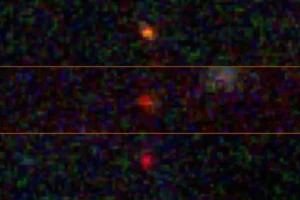
We don’t just find new stars by looking for long periods of time for things that suddenly change in new and unusual ways… although I have to admit I’m partial to all those stars that flicker and flare and vary in the night.
We also find new kinds of stars by looking fainter than ever before. Not everything is bright and not everything is near. Sometimes we only find things when we build new telescopes that are more sensitive than anything that came in the past.
And guess what – we have a new telescope.
In a new paper in the Proceedings of the National Academy of Sciences, researchers note that three objects initially identified as galaxies might instead be massive stars that are largely composed of dark matter and are emitting light due to the annihilation of dark matter.
According to the paper, “Although made almost entirely of hydrogen and helium from the Big Bang, they form at the centers of protogalaxies where there is a sufficient abundance of DM to serve as their heat source. They are very bright diffuse puffy objects and grow to be very massive. In fact, they can grow up to ten million solar masses with up to ten billion solar luminosities.”
If… and this is a big if…If their interpretation is correct, it just might be that some of the first stars were so massive they seeded galaxies. This is a new idea… and fascinating… but it is early days and we look forward to seeing more observations and more papers on these new results.
References:
Ilie, C., Paulin, J. and Freese, K., 2023. Supermassive Dark Star candidates seen by JWST? PNAS https://doi.org/10.1073/pnas.2305762120
